FEATURED TRAVEL PHOTOGRAPHY BY DAVID CARILLET
Italy is a country of immense natural beauty, incredible works of art, world-renowned cuisine, and important historical sites, making it one of the most visited countries on Earth. It leads the world in designated UNESCO World Heritage Sites, with 54 as of 2018. The legacy of the Roman Empire and its influence on Western civilisation, and the plethora of cultural wealth its people left behind, make Italy a particularly attractive destination for those with a love for history.

Brunelleschi's Dome on the Florence Cathedral, known as Cathedral of Saint Mary of the Flower.
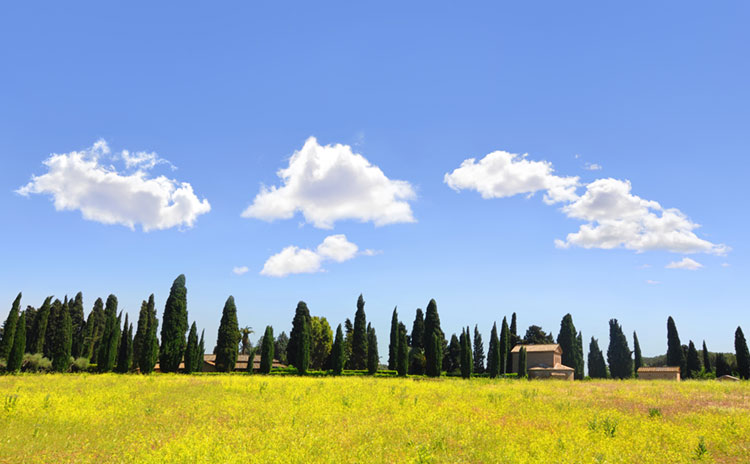
Rows of skinny cypress trees and fields of yellow rapeseed flowers in the Italian countryside.

The Ponte Vecchio (Old Bridge) over the Arno River, in Florence.
Remarkably, the Ponte Vecchio was the only bridge in all of Florence to escape destruction by the retreating Germans during World War II in 1944. Local tour guides allege that Hitler found the bridge to be so beautiful that he explicitly ordered for it be spared.

Gondola moored along a canal in the beautiful city of Venice.

Silhouette of the domes of Saint Peter's Basilica against a radiant sunset in Vatican City.
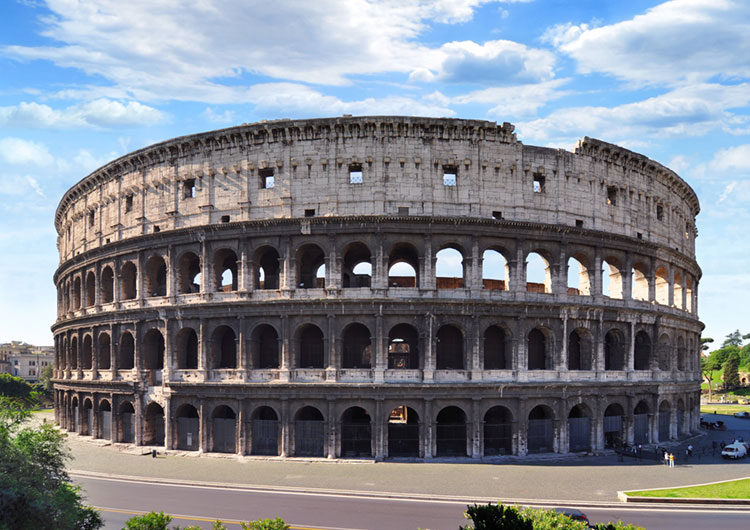
The world-famous Colosseum, or Flavian Amphitheatre, in Rome, Italy.
Ancient Romans developed one of the earliest and most advanced sewage systems. It even had a sewer goddess, Cloacina (not to be confused with Sterculius, the feces god). She controlled the Cloaca Maxima, the main canal of Rome's sewer system. The latin verb cluo, meaning to cleanse, is the word from which Cloacina and Cloaca derive, the latter of which is also the term for the digestive and reproductive orifice found in birds, reptiles, and amphibians.

Ruins of the Roman Forum as seen from the Palatine Hill in Rome.
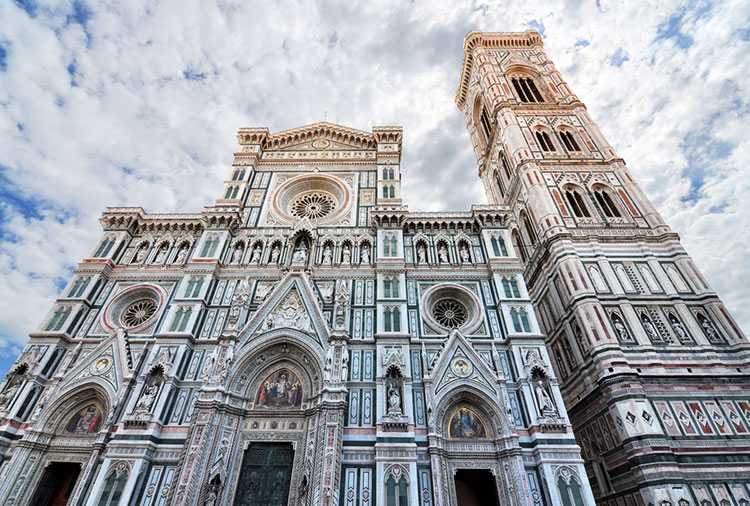
Neo-gothic marble facade of the Florence Cathedral and the accompanying Giotto's bell tower.

City skyline of the historic center of Rome with its many church domes and historical landmarks.
The idea of take-out food has existed since antiquity. In Greco-Roman times, a bar-like establishment known as a thermopolium featured a service counter that faced the street. The counter was embedded with large clay jars used for food storage. Some of the best preserved thermopolia can be found in Pompeii and Herculaneum.

The Grand Canal in Venice, with the Venetian Institute of Science, Letters and the Arts on the left and the Basilica of Saint Mary of Health taking up the background.
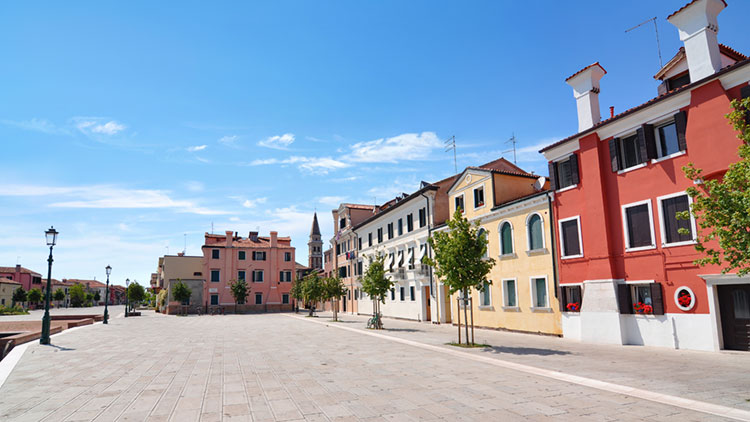
Colorful houses in Malamocco, the first settlement established on the Lido of Venice.

Red poppies and Roman ruins along a pathway at the Palatine Hill in Rome.

Italian countryside and a blur of wildflowers seen during a bus excursion out of Rome.
Among the many Italian contributions to the world of music are the 16th century invention of the violin in northern Italy, the emergence of opera at the turn of the 17th century, the invention of the piano – also early in the 17th century – by Bartolomeo Cristofori, and the first classical ocarina, known as a transverse ocarina, invented by Giuseppe Donati in the 19th century.

Pair of colorful Eurasian blue tits on the branch of an olive tree.

Distant view of the Basilica of San Domenico seen over the rooftops of Siena.

Night view of the famous Baroque style Trevi Fountain.
The Acqua Vergine, a restoration of the Aqua Virgo aqueduct that supplied Ancient Rome with water for more than 400 years, continues to bring fresh water to modern Rome via several terminals, including the Trevi Fountain. Many visitors to the fountain follow the tradition of tossing a coin over their shoulder into the water to ensure their return to Rome. More than one million USD in coins are tossed into the fountain every year, which are used to subsidize a supermarket that freely offers essential items to the city's poor.

Oculus and interior of the Pantheon, featuring the largest unreinforced concrete dome in the world.

Architectural detail of the nave ceiling and dome interior inside Saint Peter's Basilica.
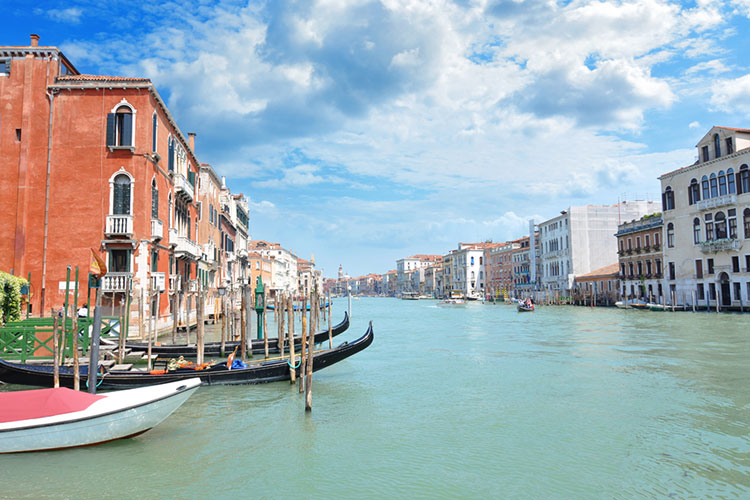
View down the middle of the Grand Canal in Venice, Italy.
The city of Venice rests atop a substructure of wooden piles constructed from some ten million tree trunks driven vertically down to a hard layer of clay underlying the softer mud of the Venetian Lagoon, upon which a layer of masonry supports the foundations of buildings. The wood pilings, consisting primarily of water-resistant alder trees, are protected from infestation and deprived of oxygen-induced decay below the seawater and mud. Most are still intact from the founding of Venice more than a thousand years ago.

Gondolier in traditional striped shirt and straw hat resting on a bridge in Venice.

Ancient olive tree on the edge of a grove in the Italian countryside.

Corinthian columns from the Temple of Vesta ruins at the Roman Forum in Rome.

Brick home in Venice with elevated entryway to protect against flooding.